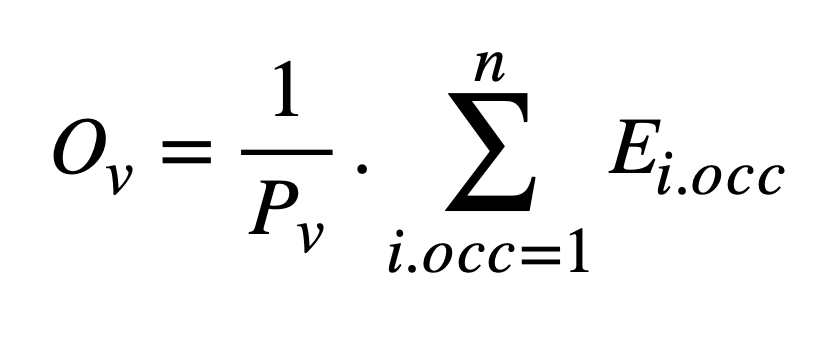
Occlusivity (Ov) expresses the proportion of edges of an isovist that are not physically defined. It represents how previously unseen space may be revealed during movement (Benedikt, 1979). Occlusivity fields show moments of dramatic visual change as a user passes between spaces. A forest or hypostyle hall has high Occlusivity; a convex room has none; flat surfaces tend to extend occlusive edges into space.
To determine occlusivity at point ‘V’, the Isovist_App calculates the total length of all occlusive edges of the polygon of the isovist calculated at V. The final total is divided by the value of the perimeter length, ‘Pv’. The outcome is a relative value between 0 and 1.
In notation form the calculation for Occlusivity is expressed as:

Where Ei.occ is length of each occlusive edge, n the total number of occlusive edges of the isovist, and Pv, perimeter.